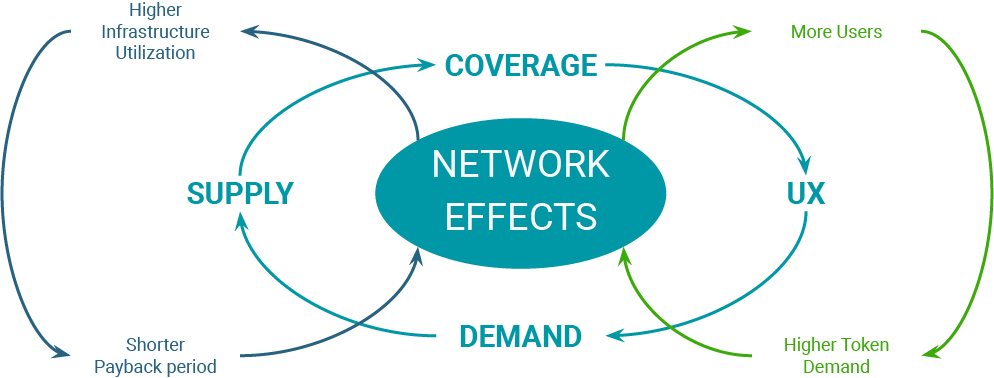DePIN Flywheel
8/12/25Less than 1 minute
DePIN Flywheel
The flywheel effect (Network Effect) ensures that the growth of the ecosystem is both sustainable and cumulative, with each turn of the flywheel generating more energy and momentum for the next.
The DePIN (Decentralized Physical Infrastructure Networks) flywheel is a conceptual model illustrating how growth mechanisms inherent in decentralized networks for physical infrastructure reinforce each other.
As these networks expand, they achieve higher infrastructure utilization, leading to lower unit costs and broader coverage. This optimization of network efficiency and reach catalyzes positive network effects, driving increased demand.

Supply side:
- Higher Infrastructure Utilization: With the platform attracting more suppliers, such as energy providers and EV charger hosts, the utilization of existing infrastructure improves. This increased usage optimizes infrastructure and enhances service coverage.
- Shorter Payback Period: Increased usage allows suppliers to recover their investments faster, making participation in the network more attractive.
Demand side:
- Higher token demand: As more consumers use the platform for energy and e-mobility services, the demand for the C4E token increases, enhancing its value and utility within the ecosystem
- More users: Increased token value and a wider range of services improve the platform's appeal, attracting even more users.
User experience (UX):
- Improving the platform's usability and overall user experience encourages both current users to continue engaging and new users to join, which can lead to even higher token demand.
Network coverage:
- The platform aims to offer comprehensive coverage for EV charging and energy-related services. As supply and demand increase, the network expands to new areas, creating a cycle of growth that continuously enhances the network's reach and utility.

